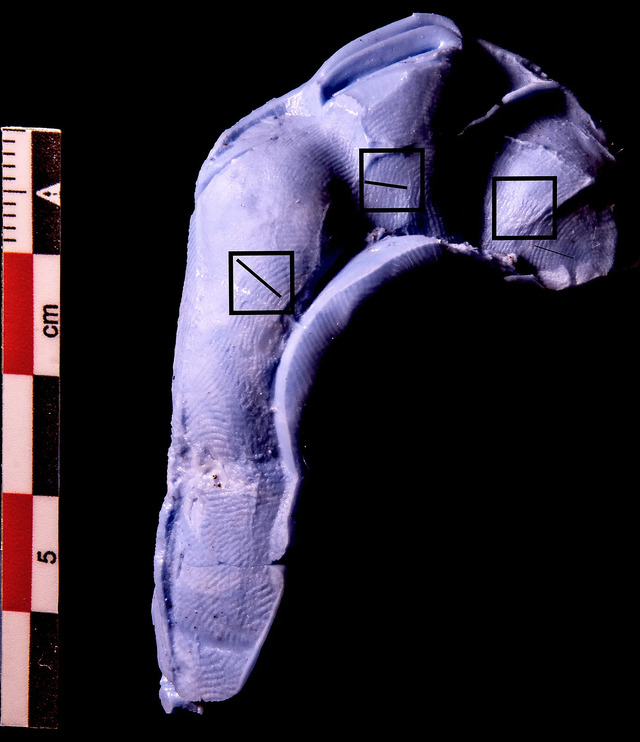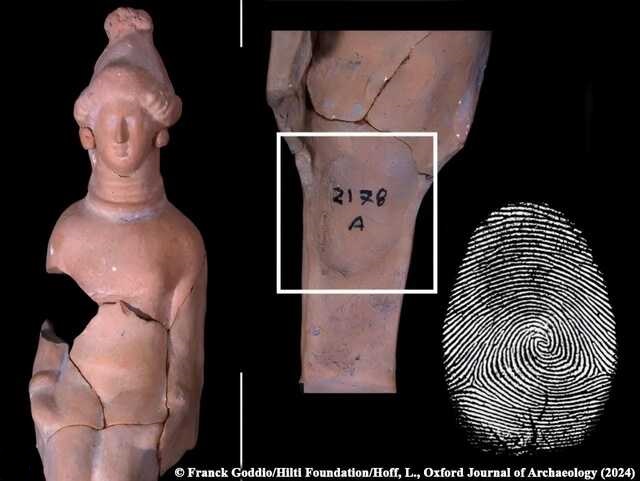Hidden beneath layers of time, ancient terracotta figurines from Egypt have held secrets for centuries. Recent advancements in technology, however, have uncovered an extraordinary detail: the fingerprints of their makers. These impressions are more than just physical evidence—they are a direct link to the hands that molded the artifacts, offering invaluable insights into the people, practices, and culture of ancient Egyptian society.
Thonis-Heracleion: The Lost City
Thonis-Heracleion, once a bustling port city near the mouth of the Nile, served as a gateway between Egypt and the Mediterranean. Founded in the eighth century BCE, the city thrived during the Saite and Ptolemaic periods as a hub for trade, migration, and cultural exchange. However, with the rise of Alexandria, Thonis-Heracleion fell into decline and was eventually lost beneath the waters.

Rediscovered in the 1990s, the sunken city has since been a treasure trove of artifacts, including terracotta figurines that date back to the Late to Ptolemaic period. Among the artifacts recovered, a few preserved fingerprint impressions, providing researchers with a rare glimpse into the lives of the artisans who created them.
The Art of Figurine-Making in Ancient Egypt
Crafting figurines in ancient Egypt was a meticulous process that evolved over time. Early figurines were shaped from Nile silt, a coarse material that limited artistic detailing. With the introduction of finer clays, artisans began creating more refined figurines, influenced by the stylistic standards of Greek art.
The process typically involved pressing wet clay into molds, which preserved the fingerprints of the artisans. After partially drying, the two halves of the mold were joined, leaving additional impressions. These figurines often depicted deities, animals, or daily life scenes, serving both religious and decorative purposes.
While Greek sources suggest that figurine-making was predominantly a male occupation, the fingerprints on Egyptian artifacts challenge this narrative, hinting at a more inclusive and collaborative practice.

Unveiling the Makers: Insights from Fingerprints
Using Reflectance Transformation Imaging (RTI), researchers analyzed the fingerprints left on the terracotta figurines. This non-invasive technique allowed scientists to measure ridge density and breadth, which can differentiate gender and estimate age. The findings were groundbreaking: approximately 14 individuals, including men, women, and children, contributed to the figurines.
Men’s fingerprints generally showed lower ridge density, while women’s had finer patterns. Children’s prints, with their thinner ridges, were also identified, though their gender could not be determined. These discoveries paint a vivid picture of an inclusive workforce, where people of all ages and genders participated in the creative process.

Women and Children in Figurine Production
Traditionally, figurine-making was thought to be a male-dominated craft, but the findings from Thonis-Heracleion suggest otherwise. Women played a significant role, particularly in crafting Egyptian-style figurines. Their contributions highlight a shared cultural labor practice that blurred gender boundaries.
Children, too, left their mark on these artifacts. Their fingerprints were primarily found on the interiors of the figurines, suggesting they were tasked with pressing clay into molds—a task well-suited to their smaller hands. Adults’ prints, found on both the interiors and exteriors, indicate supervisory roles, overseeing the assembly and finishing touches.
Contrasting Apprenticeship Structures: Egypt vs. Greece
The involvement of children in figurine production also sheds light on the apprenticeship systems of ancient Egypt. Egyptian workshops appeared to foster egalitarian collaboration, pairing young apprentices with supervisors close in age. This approach encouraged peer learning and collective creativity.
In contrast, Greek workshops adhered to a more hierarchical structure, pairing young apprentices with significantly older mentors. This difference in mentorship styles reflects broader cultural values: Egyptian workshops valued inclusivity and shared responsibility, while Greek practices emphasized authority and formal training.
Future Implications of the Study
The study of fingerprints on ancient figurines opens new doors for understanding ancient Egyptian society. By identifying individual artisans, researchers can trace their contributions across multiple artifacts, revealing patterns of work and skill development. Moreover, the findings challenge long-held assumptions about gender roles and labor structures, offering a more nuanced view of ancient craftsmanship.
As technology advances, the potential for further discoveries grows. Researchers hope to uncover more terracotta samples from Thonis-Heracleion, which could provide deeper insights into the daily lives and social dynamics of the city’s inhabitants.
Conclusion: Crafting Stories from Ancient Fingerprints
The fingerprints left on Egyptian terracotta figurines are more than just marks—they are stories etched in clay, connecting us to the hands that shaped them. Through advanced imaging techniques, researchers have unveiled a diverse and collaborative workforce, challenging traditional assumptions about ancient artisanship. These discoveries not only enrich our understanding of Thonis-Heracleion but also remind us of the universal human desire to create and leave a lasting legacy. As excavations continue, who knows what other secrets the fingerprints of the past may reveal?
